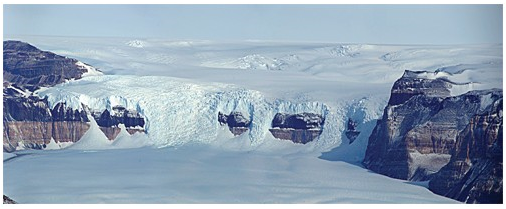The exposed bedrock in the background of the figure below, to the right, formed as

A) isostatic rebound caused the land to extend upward.
B) particularly resistant rock and/or thin ice left the rock above the ice surface.
C) a mantle hot spot melted the glacier in this localized area.
D) local wind-blown deposition concentrated in this area of the glacier.
B) particularly resistant rock and/or thin ice left the rock above the ice surface.
You might also like to view...
Which of the following is the best example of an active continental margin?
A) west coast of Africa B) east coast of North America C) west coast of South America D) east coast of South America
One general trend that is indirectly helping developing countries become self-sufficient is
A) the increased production of biofuels. B) decreased reliance on fossil fuels in the production of food crops. C) the outsourcing of manufacturing jobs from the developed to the developing world. D) a dramatic increase in the importation of mineral ores.
Assume a warm air parcel, at sea level, has a temperature of 21°C (70°F) and begins to rise upward
Assume it becomes saturated at 1000 m (3300 ft) altitude, and continues to rise to 2000 m (6600 ft.) altitude. What would the approximate temperature of the parcel be at an elevation of 2000 m (6600 ft.)? A) 9°C (48.2°F) B) 1°C (33.7°F) C) 8.6°C (22.4°F) D) 5°C (46.4°F) E) 8.2°C (46.9°F)
What factors explain the rise of tourism and retirement migration to parts of the region discussed in this chapter?
What will be an ideal response?